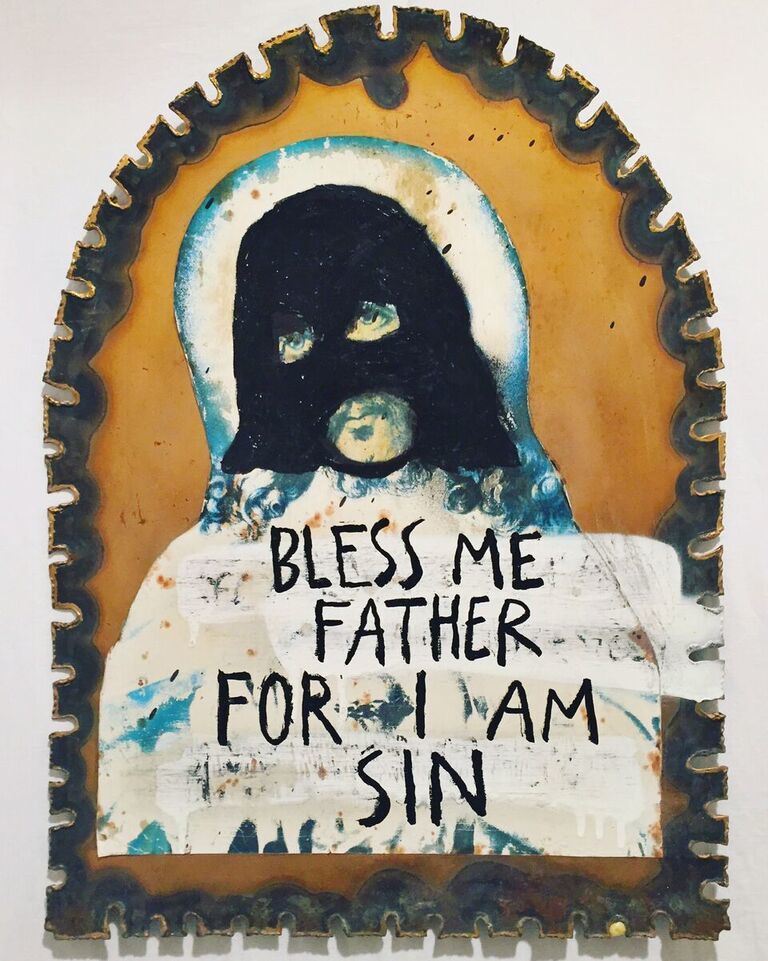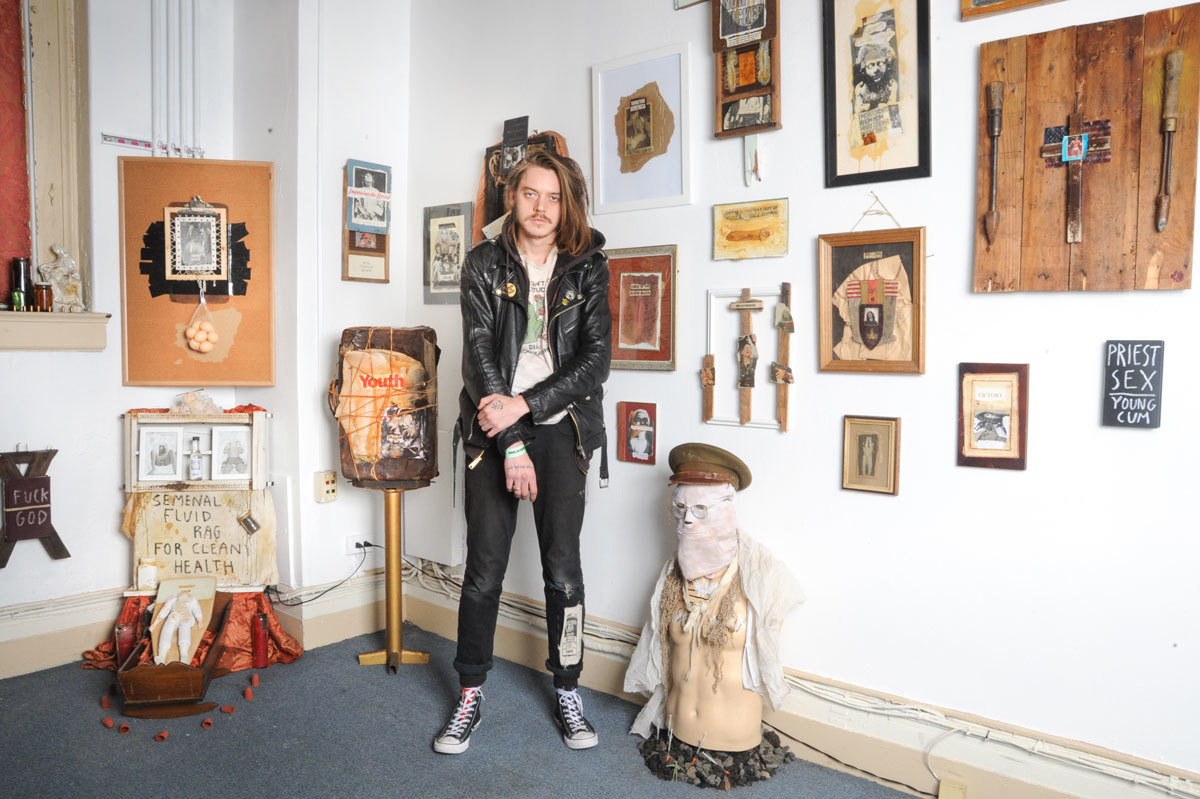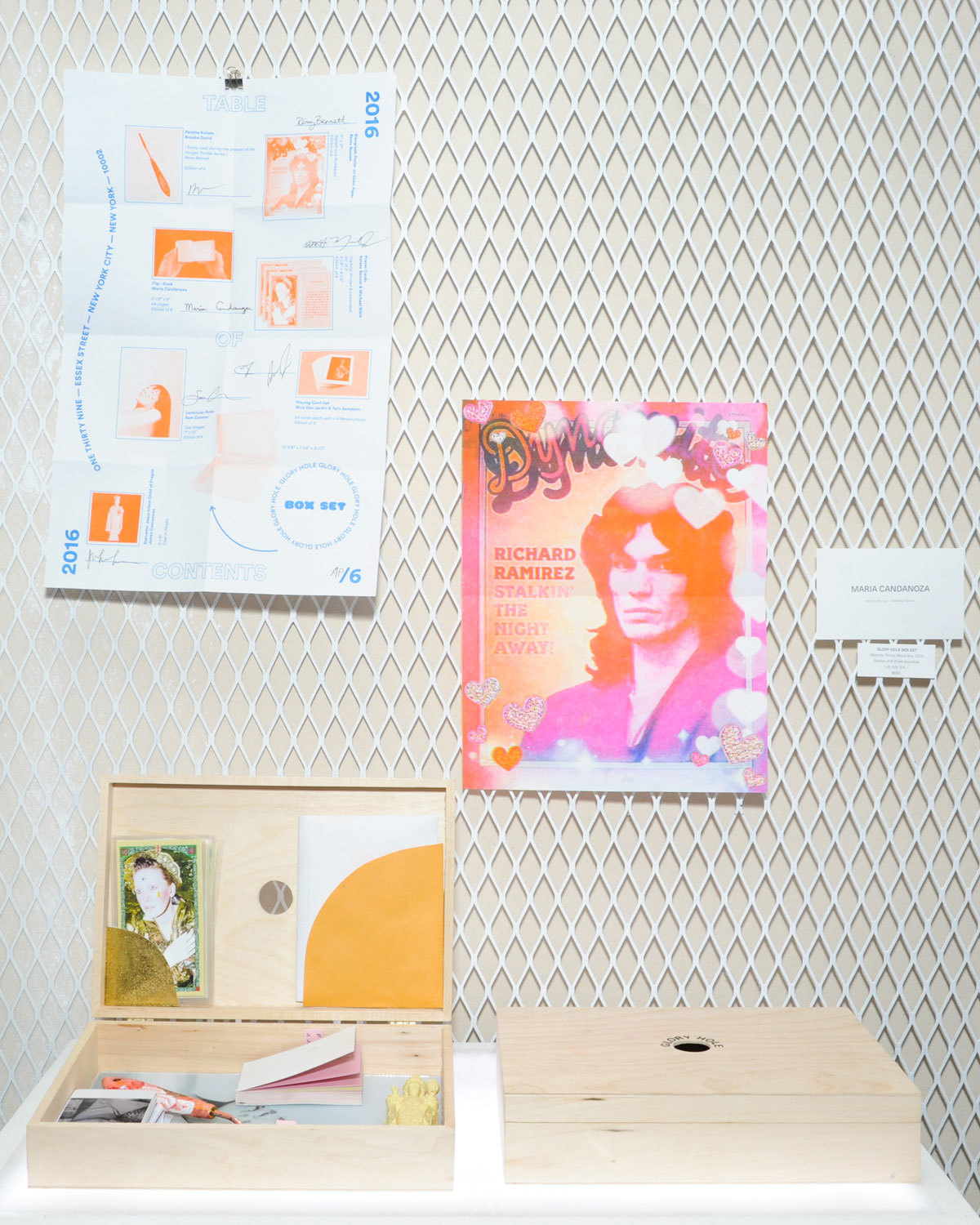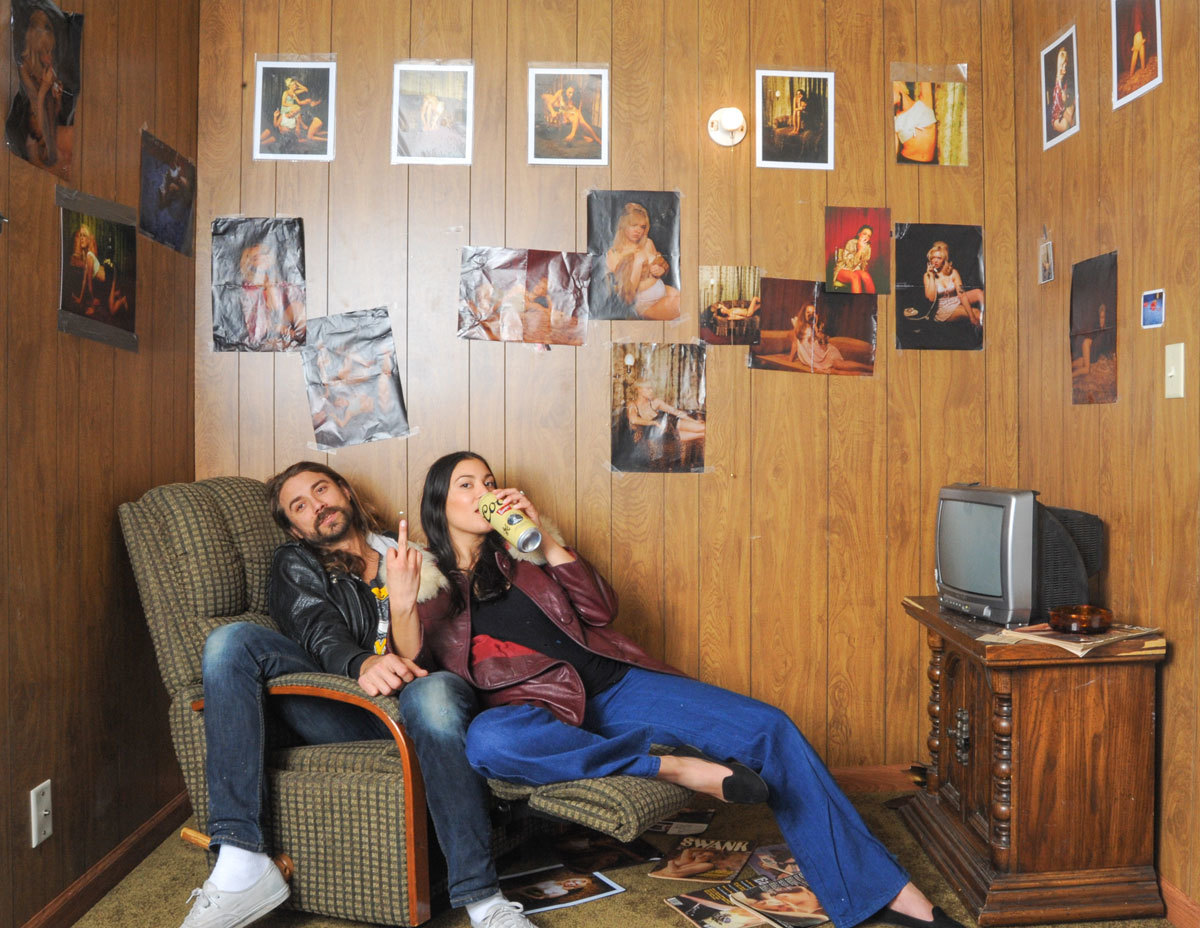Using the dystopian concept of the glory hole — a symbol of the voyeur’s gaze — feminist artist Kelsey Bennett’s latest installation is a meditation on human sexuality within the age of technology. Co-curated with her sister, Rémy, and fellow artist, Kaitlyn Parks, Glory Hole — shown at this year’s SPRING/BREAK art show in NYC — is an immersive project that brings together a diverse body of work. Its themes range from cannibalistic webcam girls to rotting meat. Touching on the notion of sexuality and wisdom, Kelsey’s own offering is a series of lenticular prints called Mother May I, which features a group of hyper-sexualized angels and a matriarchal saint. It’s displayed on an altar built by Kelsey’s partner.

What was the concept behind Glory Hole?
We knew we wanted each artist to build their own immersive installation that would house their art — the interactive quality was always key. With themes such as violence, intimacy, and obsession, we wanted there to be no boundaries between the viewer and the art.
Why the name?
The term alone has the appeal of being dirty, erotic, and funny, but also can take on so many other meanings. There is an element of anonymity involved in the shared experience with a glory hole, similar to that of a confessional, as well as to interactions on the internet. The only difference is that in our Glory Hole, there is no shame involved. We regard sex on a level of honor and worship.

What attracted you to the SPRING/BREAK Art Show?
We’ve gone to the show for years and loved the fact that it was always set in unlikely places for an art show. We knew the artists we enlisted would do something wild and interesting in a space like the abandoned offices of a post office.
How did you select the contributing artists?
We knew the artists we chose would understand the importance of making their work open and interactive. They all brilliantly created their own separate worlds within the installation that viewers were invited to step into. For instance: my sister, Rémy Bennett, and Anna del Gaizoshowcased a teaser for their short-film Eat Me about a cannibalistic webcam girl. They recreated the main character’s bedroom, literally inviting viewers under her bed sheets as they watched the film.

What’s your favorite piece and why?
Wow! That’s a tough one. I don’t have one favorite. Maria Candanoza constructed a commemorative Glory Hole box containing single objects or mementos from every artist in the show. For example: for Tavf Sampson and Nick des Jardin’s Girls in My House series, Maria created a deck of playing cards. For mine and Michael’s Sorry Saints series, she created prayer cards. Each artist’s work is represented in the box in an incredibly creative and intimate way. The box is still for sale and on display in Maria’s shop, Objectify-139.
Could you talk a bit about the work you submitted?
The lenticular prints I featured are from Mother May I, a series about sexuality and wisdom. The images are of hyper-sexualized angels governed by a fictional matriarchal saint that was displayed above an altar my partner, Michael Bible, and I built. I asked people to make offerings at the altar. Some of the things we received were perfume bottles, handcuffs, poems, credit cards, a rotten apple, and, of course, anal beads.
What do you think the body of work says about our obsession with technology?
Brooke David uses meat as a model for her paintings. When the meat starts to rot, she’s done. The cyber world is a place where nothing rots; there is a something in that which pacifies our fear of death, but there is also something deeply lonely about it because of the absence of a pulse. Sam Cannon’s digital human transmutations are a perfect visual example of this dilemma.
How do we negotiate between our obsession with technology and our need for intimacy?
We accept the fact that the natural world as we know it will continue to rapidly evolve with the cyber world as we invent it, but we remind ourselves that technology is not a basic human need.

The work in the show references the themes of sex and violence. Could you elaborate on their significance?
The urge to act upon our primitive sexual and violent instincts have to be tempered in order to live in society but they are still there in all of us, wanting to be acted upon. Because it is unnatural to stifle them, you do inevitably end up with perversions, which make human behavior particularly interesting. When expressed through art, there is a raw honesty present that feels very human, very unapologetic.
Should they mean something different for women?
Common perceptions of what it means to be female has become inaccurate because it is so often expressed by a male perspective within art and society. So when women reclaim their own expression of sexuality and violence through their art, they breathe new life into a tired interpretation. Remy Bennett’s film and installation deals specifically with violence in terms of subverting the gender roles in the horror genre and creating imagery of extreme violence where the male is being objectified. Glory Hole does not however undermine the importance of a male’s perspective regarding his sexuality. James Concannon’s work is sexually charged, aggressive, as well as vulnerable. The used condoms he incorporates in his work would be as important as a dirty tampon on display.

What experience did you want to inflict upon your viewer?
We wanted the viewers to feel like participants within Glory Hole. We wanted them to feel nostalgic for a stranger time and place.
What’s next?
My partner is a writer and we often work together on projects. He’s written a short story about a real war between genders, and while we were in Joshua Tree, I shot some pictures of his characters. We’re thinking of writing it as a screenplay. Michael and I are also working on developing a queer web series with activist/performer Jacob Tobia.
Works from Glory Hole can be viewed and purchased from Spring/Break’s website.
Credits
Text Tish Weinstock
Photography courtesy of Kelsey Bennett
